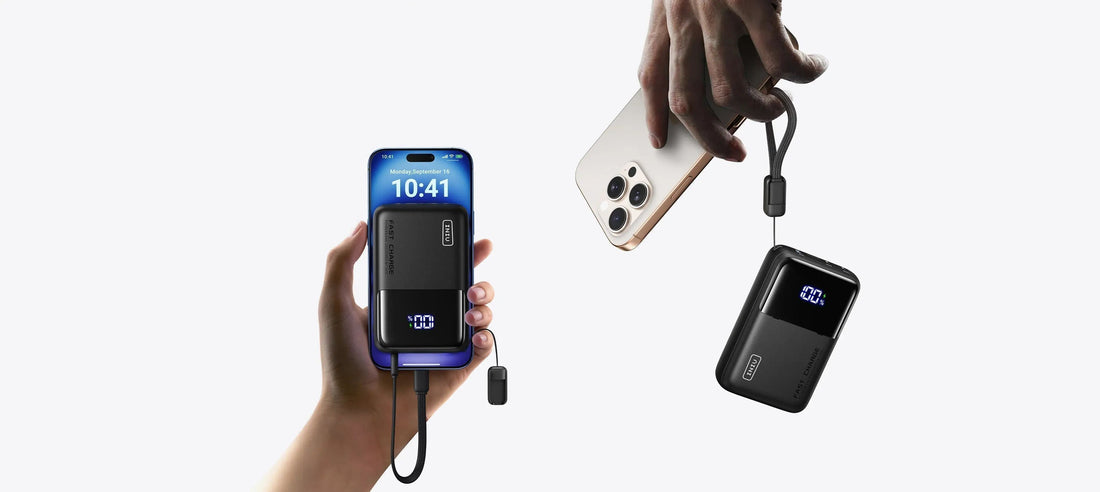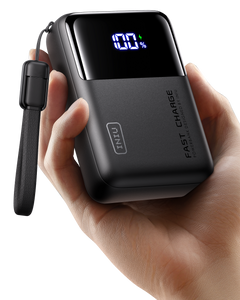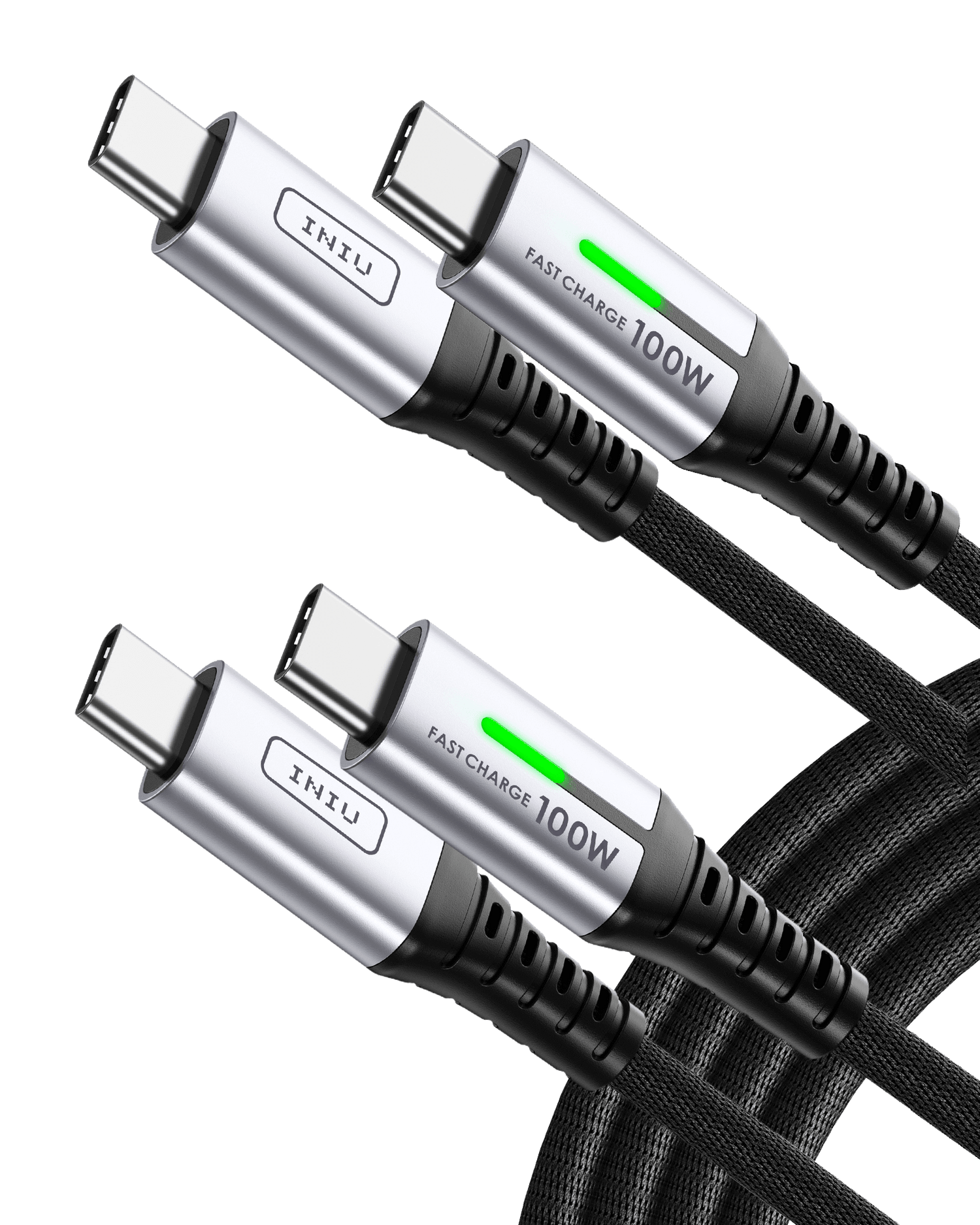
Power Bank Swelling? What You Need to Know
It may sit quietly in your drawer or bag, but a swollen power bank is a warning sign. It means something has gone wrong inside. Many people ignore the early signs. Others don’t even notice until it’s too late. Knowing what to watch for can help you stay safe and protect your other devices.
What Does a Swollen Power Bank Look Like? 6 Warning Signs
Some swollen power banks are easy to notice. Here are the most common signs:
- Bulging Shape : The body may look rounded instead of flat. The swelling can affect one side or the whole surface. It may wobble on a table or no longer sit flat.
- Buttons Feel Tight or Stuck : If your power bank has a power button, it may feel harder to press. Internal pressure may be pushing the button outward.
- Case No Longer Fits : If you use a cover, sleeve, or organizer, the power bank may feel too big for it. The fit may become tight, stretched, or uneven.
- Cracks or Gaps at the Seams : The edge lines of the shell may look split or slightly open. You may see plastic parts pulling apart or tiny cracks around the corners.
- Feels Warm When Not Charging or in Use : A swollen power bank can overheat even when idle. This is not normal. Touch the body briefly to check for warmth without plugging it in.
- Strange Chemical Smell : Swelling sometimes causes leaks inside . These leaks may give off a sour, metallic, or plastic-burning smell. If you smell anything strange, stop using the battery.
Even if only one of these signs shows up, stop using the power bank. Do not try to charge it or pack it in a bag. Store it somewhere safe until you can dispose of it properly.
Why Does a Portable Power Bank Become Swollen? 7 Common Reasons
Power banks are made to handle daily use. But over time, certain habits or conditions can cause the battery inside to break down. When the chemical layers inside a lithium-ion cell get damaged, they can release gas. This gas builds up and causes the battery to swell. Here are the most common causes:
- Overcharging : Charging beyond 100% or leaving it plugged in for too long builds internal heat and pressure. Some older power banks have no protection against this.
- High Heat Exposure : A parked car, direct sunlight, or a warm windowsill can raise battery temperature fast. Heat weakens the structure inside the battery and speeds up failure.
- Wrong Charging Gear : Using a charger with incorrect voltage or current can harm the battery. Low-quality USB cables or wall plugs may cause uneven charging.
- Drops, Bumps, or Heavy Pressure : Dropping a power bank, sitting on it, or packing it tightly under heavy items can crush the internal cells. Damage builds up over time.
- Cheap or Low-Quality Battery Cells : Not all power banks use the same parts. Some cheaper models cut costs with weak batteries that break down faster.
- Too Many Charge Cycles : All batteries have a life span. After 300–500 full charges, a power bank starts to weaken. Swelling may begin near the end of its useful life.
- No Rest Periods Between Charges : Charging a power bank right after use, while still warm, can add stress. Letting it cool down first helps protect the battery inside.
Even a well-made portable power bank can swell under the wrong conditions. Good care helps, but batteries are not forever . Knowing the causes makes it easier to avoid early damage.
What Are the Dangers of a Swollen Power Bank? 5 Potential Risks
At first glance, a swollen power bank might not look alarming. It may still charge your phone or light up when plugged in. But inside, serious damage could be building up. Here are the key risks to know:
- Fire Hazard : The battery inside stores chemical energy. If the internal structure is damaged or under pressure, it can overheat. In some cases, the pack can catch fire or even explode. This can happen suddenly, especially during charging.
- Toxic Fumes : A broken lithium battery may release gas or vapor. These fumes are not just unpleasant; they can irritate the eyes, throat, and lungs. In a small room or bag, the exposure can be harmful.
- Burn Damage to Nearby Items : If the battery ruptures, the heat and liquid inside can destroy anything close. Bags, clothes, books, furniture, and even electronics stored nearby can get burned or melted.
- Electric Shock Risk : Swelling often breaks the outer case. If metal parts or wires become exposed, touching them by accident may cause a shock especially if moisture is present.
- Sudden Power Failure : A damaged battery may stop charging or die quickly under load. You could end up with no backup during a trip, flight, or emergency, just when you need power most.
Any swollen power bank is unsafe to use. Even if it seems to work, the risk outweighs the benefit. It's better to stop using it right away and plan for safe disposal. Understanding how to use a power bank safely can help prevent these dangerous situations.
What Should I Do With a Swollen Power Bank? 6 methods
You may feel nervous once you realize your power bank is swollen. That’s normal. The good news is, you can handle the situation safely if you follow a few simple steps. Here’s what to do:
- Do Not Throw It in the Trash : Regular garbage trucks and landfills are not designed to handle lithium-ion batteries . Most cities classify them as hazardous materials.
- Store It in a Fire-Resistant Box or Container : Until you can take action, place the power bank in a metal container, ceramic bowl, or fireproof bag. Keep it on a cool, dry surface, away from anything flammable.
- Avoid Handling It Too Much : Don’t squeeze it, bend it, or poke at the swollen parts. Pressure can trigger a chemical reaction or break the seal.
- Find a Local Battery Recycling Drop-Off Point : Electronics stores, large supermarkets, and recycling centers often accept swollen batteries. Call ahead to ask if they take damaged power banks.
- Contact Local Waste Services if Needed : Some areas offer hazardous waste collection or special recycling days. You can ask for instructions by phone or through your city’s website.
- Never Try to Open or Fix the Battery Yourself : Attempting to cut or pry open the pack can release gas, fire, or acid. Only professionals should handle internal battery repair.
Treat your power bank as you would a leaking chemical container. Keep it stable, avoid impact, and pass it to trained handlers as soon as possible.
How Can I Keep My Portable Power Bank Safe from Swelling? 7 Safe Tips
A swollen power bank may sound scary, but most cases are avoidable with simple ways:
- Stop Charging After It Reaches Full Power : Unplug the power bank once it shows 100%. Letting it stay connected for hours adds heat and strain. Avoid charging overnight unless the charger has smart cutoff features.
- Store It in Cool, Dry Spaces : Heat speeds up wear on lithium batteries. Keep your power bank out of hot cars, windowsills, or pockets near your body for long periods.
- Use High-Quality Charging Gear : Only use cables and adapters that match your power bank’s voltage and current rating. Cheap or mismatched gear can cause unstable charging.
- Charge It at Least Every 3 Months : Power banks degrade faster if left empty for long. A light top-up every few months helps keep the internal cells balanced and healthy.
- Avoid Letting the Battery Drain to Zero : Try not to wait until the last bar is gone. Charging from 20–80% is gentler on the battery and helps it last longer.
- Handle With Care While Traveling : Do not jam the power bank into a tight bag or suitcase. Keep it away from sharp items or heavy pressure.
- Check for Early Warning Signs : Watch for small bulges, heat while idle, or changes in how the power bank performs. These could be early signs of swelling or failure.
A little attention now can save you from major damage later. These habits also help your power bank work better and last longer .
6 FAQs About Power Bank Swelling
Q1. Can a swollen power bank still charge my devices safely?
No . Even if a swollen power bank seems to work, it is not safe. Internal damage may cause unstable voltage output, which can harm your phone, tablet, or other electronics. Continued use also increases the risk of overheating, short circuit, or battery rupture.
Q2. Is it safe to store a swollen power bank in the freezer or refrigerator to reduce swelling?
No . Cold temperatures do not reverse swelling. In fact, placing a lithium-ion battery in extreme cold can crack the casing and worsen internal pressure. Only trained professionals should handle damaged batteries.
Q3. Is a high capacity power bank more likely to swell than a smaller one?
Not necessarily . High capacity power banks (20,000mAh and above) carry more energy, so poor design or overheating poses a bigger risk. But if they use high-quality cells, good thermal management, and certified protection circuits, they can be just as safe as smaller models.
Q4. How can I avoid buying a poor-quality power bank?
Choose a power bank from a trusted brand with clear safety features . For example, INIU’s 15-Layer SmartProtect system stops any unusual charging right at the start. It helps take away risks like overheating and battery damage. Also, INIU gives an industry-leading 3-year warranty, so you know the brand stands behind its products.
Q5. What affects a power bank's charging efficiency the most?
Charging efficiency depends on three main factors:
- The battery cell type and quality inside the power bank (e.g., Li-ion vs. Li-polymer )
- The charging voltage/current compatibility between the charger and the device
- Heat loss during conversion (some energy is lost as heat during charging or discharging)
A typical portable power bank has 85%–95% conversion efficiency. Using mismatched cables or charging under high temperatures can reduce this number significantly.
Q6. What is PD fast charging, and how is it different from regular USB charging?
PD (Power Delivery) is a fast-charging standard that allows two devices to communicate and safely transfer higher power levels. A power bank with PD fast charging can charge compatible phones, tablets, or even laptops at up to 100W (depending on model), compared to 5–12W in regular USB-A charging. PD also adjusts power flow dynamically, which helps protect battery health and reduces charging time.




